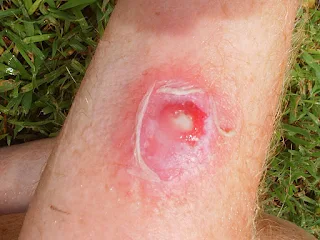HOW DANGEROUS CAN STAPH INFECTION BE.
If staph enters the bloodstream, it can cause life-threatening infections that can result in sepsis or death. Methicillin-resistant staph (MRSA) and methicillin-susceptible staph are the two types of staph (MSSA). Staph can spread within and between healthcare facilities, including hospitals, as well as within communities.
1. Prostate enlargement: Men who have chronic staph infections and who do not receive proper care may develop enlarged prostates.
2. Infertility: Staphylococcal infections that are chronic or untreated can cause both primary and secondary infertility in both males and females. In addition to miscarriage, Staphylococcus aureus can result in fallopian tube obstruction. It can also result in poor sperm counts or watery sperm in men, which leads to infertility in men.
3. Erectile dysfunction and frigidity: It is one of the main causes of erectile dysfunction and impotence in men. It reduces blood flow to the vaginal area, which affects men's performance. It may cause ladies to become icy.
4. Low libido or lack of sexual arousal: Both men and women may experience these side effects.
5. Menstrual disorder: Long-term infections, such as staph aureus, can cause hormonal imbalances, which can make women's periods scanty or absent, painful, and accompanied by heavy bleeding.
Low immunity: A chronic infection may weaken the immune system, making it easier for additional diseases to infiltrate the body.
7. Fibroid: It may result in hormonal imbalance, estrogen dominance, fibroid development, or cancer.
8. Skin infection: It may result in skin and soft tissue infections. It can result in boils, impetigo, etc.
9. Bloodstream infection: It can cause septic shock, which has a high mortality rate, by infecting the bloodstream ( scientifically proven).
10. Infections of the eyes: Staphylococcus can enter the eyes and infect them.
Treatments At Home For Staph Infection.
Certain natural therapies can boost the body's immunity. These, however, do not take the place of medical care.
TUMERIC.
Curcumin, the primary component of turmeric, has anti-inflammatory and antibacterial effects and may treat staph infections. The illness can be treated with a tonic comprised of turmeric powder mixed with black pepper, water, and coconut oil and taken many times each day. To lessen the discomfort and redness, turmeric powder mixed with lime powder and water can also be applied as a paste to the affected area. It lessens inflammation and dries up the blister's pus.
Please take note that some of the aforementioned claims lack scientific support. However, they are extremely typical in the majority of staphylococcus aureus patients.
Treat staphylococcal infection as soon as possible. Life is good, but not when you have recurring infections. Well-being is riches.
The type of infection and whether it is treated both affect how long a staph skin infection takes to recover. Without treatment, a boil, for instance, would take 10 to 20 days to heal, but treatment might shorten that time. The majority of sties disappear on their own in a few days.

